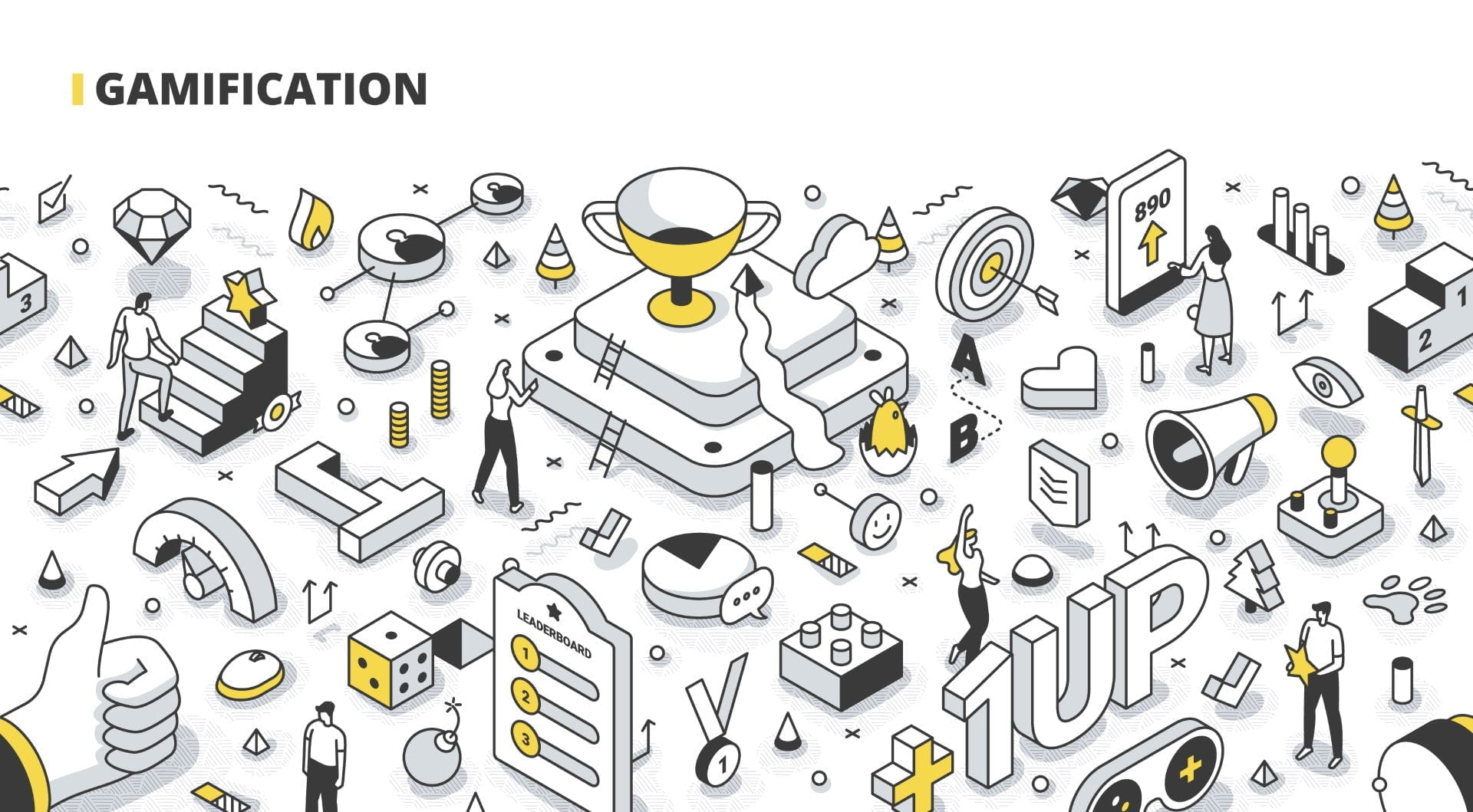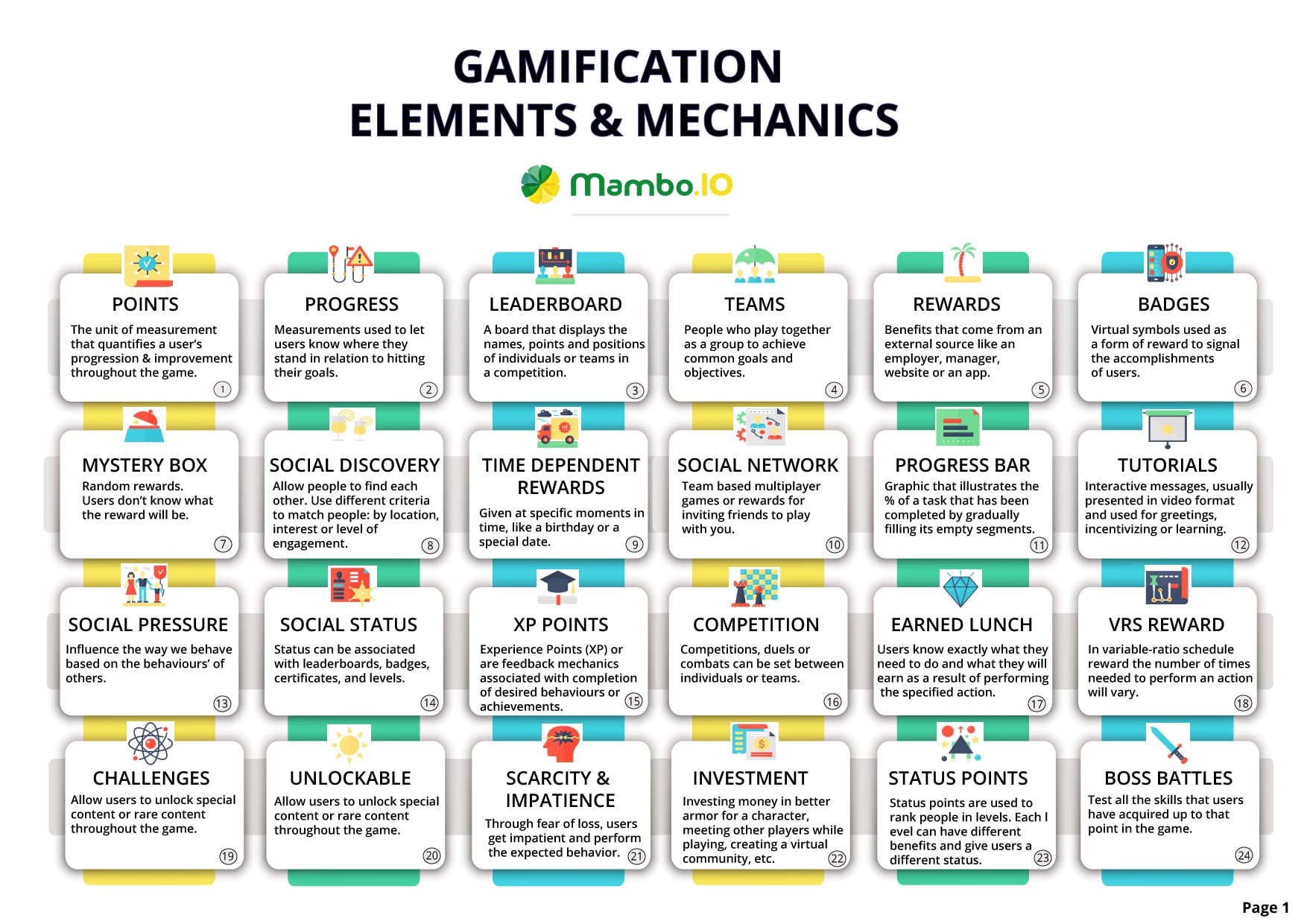How to Create Effective Digital Customer Engagement
Creating customer engagement is one of the many ways that companies can boost their bottom line.
But, what are the quick wins in digital customer engagement that you can tap into for competitive advantage? Overall, what do your customers want? How can you leverage gamification to meet those expectations? And, what does that process look like?
Launching a goal-focused programme is critical to its success. Thankfully, there are some effective steps you can take to achieve an engagement programme that meets your needs.
We’ll share the benefits, process and key considerations for your digital customer engagement strategy in this 10-minute read.
Table of Contents
- What is digital customer engagement?
- What are the key challenges associated with customer engagement?
- What do customers want?
- How Gamification can drive sustainable customer engagement?
- What’s the process to gamify a product or service?
- Frequently Asked Questions: Digital Customer Engagement
- Digital Customer Engagement Conclusion
- Machine Learning In Finance: 12 Essential Applications
- How To Create Interactive Compliance Training For Bank Employees
- How Fintech Apps Are Using Gamification To Increase User Engagement
Download your free
“Gamification Guide”
Get your PDF now and start transforming your approach to digital engagement!
What is digital customer engagement?

Digital customer engagement is shorthand for every email, tweet, live chat, browse or app session that potential or current customers might have with your brand. Any time they interact with you over a technological medium, that’s digital customer engagement.
However, these connections can be good or bad for your relationship. Naturally, you want the good interactions to outweigh the bad. But how can you ensure that happens consistently? What are you up against?
What are the key challenges associated with customer engagement?
- Distraction– It’s a noisy marketplace out there. All of your competitors are trying to get your customer’s attention. So, a big challenge is to stand out to attract interest through your digital customer engagement strategies.
- Expectations– We’re all spoiled for choice. So, our expectations are higher than ever. Your digital customer engagement strategy has to grab attention and meet the modern consumer’s very high standards.
- Connection– While you do want new customers, it’s important to find innovative approaches to reconnect with your existing clients too. How can you maintain a productive ongoing relationship with them?
What do customers want?
First, we’re not reinventing the wheel when we tell you that customers want fast, accurate help when they need it. Plus, they want to be treated like an individual, not a number. Moreover, when you give them suggestions for services or products, they need to be relevant. You better be regularly showing them how much you value their business. Beyond that, the modern consumer might be affected by additional purchasing influences.
Here are some factors influencing today’s customer acquisitions
- Unique experiences- Throw the cookie cutter away. Customers want unique experiences throughout the customer journey. Canned answers aren’t acceptable anymore. Overall, you need to delight customers with what you can do for them.
- Service- No matter what you sell, service is a product too. It’s one of the few ways you can set an unremarkable product apart. Above all, you’ve got to build a culture where great service is reinforced as a core value.
- Control- You’ve got to give control over to your clients. Initially, they’ll choose what they buy. But beyond that, they need to manage how they are marketed to. To point out, for an effective digital customer engagement approach, that includes contact methods too. In brief, if you don’t, they will just choose someone who will..
- Value- Forget price. Find the value. Look for the balance between what seems ‘cheap’ or what feels like a rip-off. Unless your customers are happy about what they’re getting for their money, they’ll buy.
- Personal recommendations – The downside of digital customer engagement is that your potential customer can get loads of online recommendations in seconds. So, you want your loyal customers to be actively recommending you. According to Invesp, “Word of Mouth marketing impression results 5x more sales than a paid media impression and people are 90% more likely to trust and buy from a brand recommended by a friend.”
- Efficiency- Efficiency isn’t just doing things quickly. It’s doing them accurately too. But improving efficiency starts at the top with procedures that upper management live & breathe. Then, it gets filtered down to the front-line teams for your customers to experience.
- Relatedness- How can your customers be the hero of your story? When you find ways to connect your brand with your customers, you win. Train your teams on how to use that story for inexpensive marketing. After all, shared stories breed loyalty.
- Understanding- Help your staff help your customers. They expect rapid solutions to their customer support queries. But more so, they want you to help them understand how your products will improve their life.
- More Loyalty- Your business needs customer loyalty. Truthfully, that’s probably why you’re considering improving your digital customer engagement anyway. In reality, your customers want you to be loyal to you too. With this in mind, always be honest. Deliver what you say you will.
- Social responsibility- In essence, let customers know you share their values. According to Investopedia, “many individuals will gladly pay a premium for goods, knowing that part of the profits will be [channelled] towards social causes near and dear to them.”
How Gamification can drive sustainable customer engagement?

In the long run, you want to keep your current customers engaged while attracting new customers. That’s a challenge. But gamification can help keep your community engaged. When you put a game mechanic into a non-gaming space, you can motivate people to stay connected. It can form a crucial part of your effective digital customer engagement strategy. Definitely, you can drive more participation from those customers through rewards & challenges.
How to boost digital customer engagement in your customer community with Gamification?
- Leverage brand awareness– Get shared. When your customers hit milestones, they’ll want to share those achievements. Ideally, this will increase your brand awareness organically & cost-effectively.
- Boost user engagement– Community as competition. Drive effective digital customer engagement through levels & rewards for community interactions. For example, you could give badges for discussions, support, reviews and more.
- Create brand loyalty– Invest in your loyal customers. As your community earns badges, points and climbs the leaderboard, reward that reputation. Give them merch or discounts when they help you with reviews or other positive actions. Overall, they will feel valued. Plus, you’ll earn their continued loyalty.
- Generate customer data– Gaining data is valuable to you. First, it can help you understand your customers. This can help you tailor marketing to them. Next, it can help you boost your digital customer engagement strategy by looking at their participation levels. In short, that will help you optimise on both fronts.
- New product or service release– Gamification can make learning fun. Altogether, make the training materials & product information into a game. Let your customers virtually walk through how your new product or service will make a difference in their lives.
- Augment lead scoring– How likely is this lead to convert into a customer? It’s a million-dollar question. But in some ways, gamification can help you do that. Ideally, when your leads are engaged, you’ll learn more about what your ideal customer acts like. Then you can assign that value to any lookalikes.
What’s the process to gamify a product or service?

#Step 1 -Identify your pains
What are your goals for gamification?
Initially, you need to set your business objectives. Target one single problem area that you need to solve with the gamification. This might be lack of satisfaction when bank clients try to understand their finances. Motivation loss while following a prescribed diet. Difficulties encountered during a patient rehabilitation. Or even lack of interest in your brand after the first purchase. Wherever you’ll get the most return for your digital customer engagement investment, that’s the focus.
#Step 2 -Survey your customers
Next, you need to know what will interest them. With this intention, it’s probably a good idea to survey your customers about what motivates them to buy, refer new customers, engage with the brand or carry out other desirable behaviours. Then, you can match your gamification for digital customer engagement with those valuable rewards. Remember, not every reward needs to be something tangible. Intangible motivations often are just as powerful
#Step 3: Learn about human motivation
The human factors at work are largely even more important than the tech. Overall, people respond to both intrinsic & extrinsic motivators. Intrinsic is internal – everything related to self-worth, value, mastery, belonging and similar. While extrinsic is everything else. These are your outside motivational influences like awards, money, points, badges and more.
Some powerful theories on human motivation include Maslow’s Hierarchy of Needs, McGregor’s Theory X, Theory Y, Herzberg’s Two-Factor Theory and McClelland’s Three Needs Theory. Certainly, a study of these theories can help you understand how to leverage human nature within gamification.
#Step 4 -Define your goals
Specifically, what actions do you want gamification to drive? Here you’ll define what customers are doing right now. Then you’ll map what you want them to do as a result of gamification. Accordingly you’re setting the target for your project. As an example, let’s say your customers don’t understand a product add-on. Perhaps that unfamiliarity is causing low satisfaction? Consequently, your gamification goal could be to encourage clients to use the training. Following that, armed with this new knowledge, they will be able to help other users understand too.
#Step 5 -Identify your Rules
- How will your levels work?
- What tasks or assignments will you have your customers complete?
- How will you score it?
- How can customers earn or lose points/experience?
- What sorts of rewards are on offer?
- How do customers get those rewards?
#Step 6 -Choose Your Gamification Elements
- Leader Boards -People love to compare themselves to others. Leader boards help your customers productively do that. For competitive people, this will encourage them to perform better.
- Points– Gems, tokens, credits; whatever you call them they are measurement units. They let you count the value of a player’s actions within your digital customer engagement gamification environment.
- Rewards – When your customers do what you want them to, reward them. This might be with intangible things like badges or physical goods like cash, gift cards or in-app credit. These are all desirable rewards. Remember, keep the best rewards reserved for the toughest tasks.
- Avatars – As we said earlier, your customers want to be seen as unique and not a number. One way to do that is to give them a visual representation within your community. It provides a place for self-expression. As such, it’s a positive digital customer engagement tool.
- Badges– Simple, yet effective. In general, badges are icons that publicly denote achievement. Every time a customer earns a badge, they have a permanent record of their successes. In short, it’s social proof!
#Step 6 -Platform Research
Once you’ve defined your problem, goals, and mechanics; you’ll need to find a platform to enable them. All things considered, a great digital customer engagement gamification platform needs to meet your needs. That’s paramount. The best gamification platform should:
- offer flexibility
- come from a company you can trust
- be reliable
- offer customisation
- have clear data ownership
- be flexible
- remain in budget
- work with your other programs
- adhere to data protection regulations
- be user friendly
- have good support in place
The ideal gamification plaftorm needs to enable agile reactions to the changing needs of your customers. For more help choosing the best gamification platform for your digital customer engagement strategy, check out our other guide.
Frequently Asked Questions: Digital Customer Engagement
● Why is digital engagement important?
Digital customer engagement has a range of benefits. First, it helps you close more deals. That sales funnel velocity? Increased. Incidentally, that helps you meet your supplier’s expectations too. Overall, when your customers are engaged from start to finish, you get more loyalty. Next, you’ll also get more data. That data? It’s not just stats. You will gain customer insight which lets you improve their experience. Finally, digital customer engagement enhances the brand experience overall; generating trust.
● What are the top gamification features to consider for digital engagement?
- Customer loyalty programs: Some might say loyalty programmes are the backbone of digital customer engagement. Hence, customers get points when they order, refer, review or celebrate a life event. In general, this speaks to our need for development, accomplishment, possession or ownership. When they see the value of these points, they’ll want to collect them.
- Personalised product recommendations: Enhance the customer journey with personalised suggestions. To do this, ask a mix of questions. For example, you could ask if they’re sporty, trendy or nerdy. Or you might find out something simple like what their budget or age group is. In fact, think of reasons why they might buy. Then, just match them to your products using that info in fun ways.
- Spin the wheel: Add some drama to your rewards. Ultimately, by letting customers spin to win deals or discounts, you’re adding excitement to their visit. You could put a non-winning slice on that daily-spin wheel to encourage repeat visits. That way, if they’re not lucky today, they might be tomorrow. At the same time, lock it all behind an email address information request to gather valuable data on your visitors.
● How can the Mambo Gamification Platform help to drive digital engagement?
Mambo Gamification Platform is the most flexible platform for digital customer engagement out there. We’ve got years of experience adapting to different use cases. So, you can be sure of a perfect fit for your needs. Plus, we’re not simply providing a platform for customer engagement. Ingeniously, our solution looks after employee engagement too.
Digital Customer Engagement Conclusion
In summary, gamification is a great tool for digital customer engagement. First, it taps into human motivators. Then, it pushes those levers to drive your defined business actions. Next, it makes those behaviours fun or desirable. Plus, it gives customers the rewards they want. As a result, your organisation receives the loyalty & data it needs. This drives up your profits.
Mambo can help you define an effective gamification strategy for digital customer engagement in your organisation. We’ve worked across numerous environments to design, integrate and roll out gamification that generates effective increases in ROI.
Why not talk to our team about your digital customer engagement goals today? We’re ready and waiting to have a confidential scoping conversation about your needs.
Download your free
“108 Gamification Elements and Mechanics”
Get your cheat sheet and have a quick reference at your fingertips!
Related Posts
Machine Learning In Finance: 12 Essential Applications
The impact of machine learning on finance is significant. Thanks to this technology, financial institutions are now equipped to make efficient decisions. Through the analysis of data sets, machine learning […]
How To Create Interactive Compliance Training For Bank Employees
Banking compliance training isn’t just another task. It’s the stage where everything else performs. Banks must navigate a myriad of regulations and laws. After all, this is a trust-driven, high-stakes […]
How Fintech Apps Are Using Gamification To Increase User Engagement
Discover how gamification in fintech is revolutionizing financial engagement, making banking fun & boosting user loyalty.





